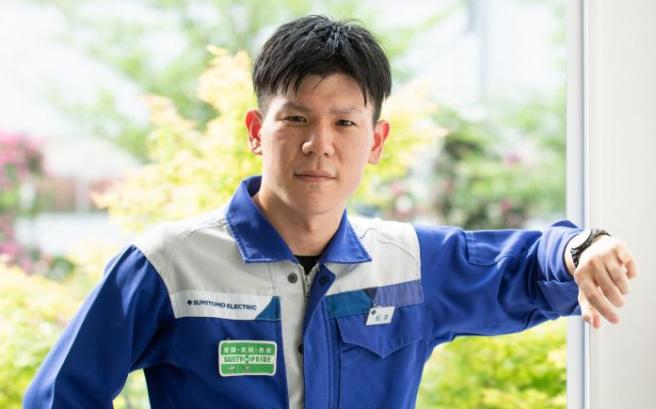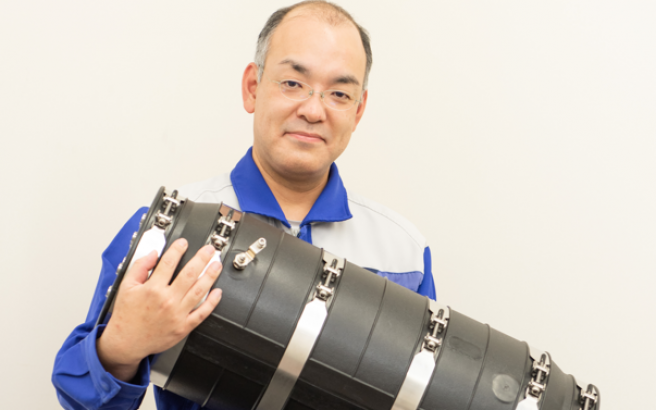Application and Further Potential of Q(t) Method for Accelerating the Development of Insulating Materials
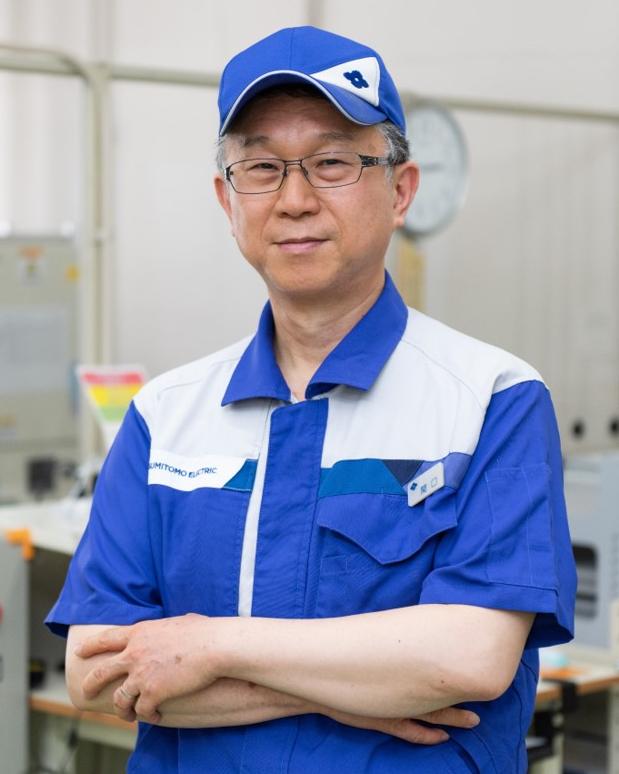
Analysis and Elucidation of Space Charge and Electrical Conduction Behaviors of Cross-linked Polyethylene by Q(t) Method
Yoitsu Sekiguchi
Assistant General Manager, Energy and Electronics Materials Research Laboratory
Electrical insulating materials are widely used in a variety of electrical equipment and power cables to maintain high voltages and block current leakage. Therefore, these materials are essential to utilize electricity safely. However, much remains unknown about phenomena that occur when a high voltage is applied to a material and the precursor, the “space charge” distributed in the insulation layer.
Recently, there has been growing global demand for high-voltage direct current (HVDC) cables due to their low environmental impacts. Sumitomo Electric has also been promoting the development of these cables. Cross-linked polyethylene (XLPE), which is an insulating material for these HVDC cables, is required to ensure performance different from that required for alternating current (AC) cables and higher levels of safety. To promote the development, we have been conducting measurement of XLPE using a measurement technique called the direct current integrated charge method (Q(t) method) to analyze various phenomena. The results have found that the Q(t) method is an excellent technique that makes it possible to obtain several categories of information based on simple operation.
Concurrent measurement of multiple material properties based on weak currents
Weak currents that flow when a voltage is applied to polymeric materials, such as XLPE, are the key to understanding various physical phenomena that occur in the materials, such as polarization, space charge behavior, and electrical conduction. No matter how weak these currents are, the intensity, duration, and behavior of the current vary significantly based on the phenomena. For this reason, measurements were generally conducted separately depending on the purpose of the measurement. For example, in terms of electrical conduction, a picoammeter was used to directly measure the current flow. Here, let me explain this by replacing the current flow with water flow, the picoammetry method directly measures the water flow with a flowmeter, while the Q(t) method measures the amount of flowing water that accumulates in a container. Such a technique is called integration in mathematics. Based on integration, the Q(t) method has enabled concurrent measurement of different phenomena, which were separately conducted before. In addition, the preparation for measurement requires only simple operation: connecting a test piece to a capacitor for measurement, which serves as a container for electricity.
Q(t) method, which is simple and widely applicable
In this experiment, we repeated the process of applying a voltage to XLPE material for AC cables and DC cables (AC-XLPE and DC-XLPE, respectively) for eight hours and investigated the changes in weak currents to derive the respective properties based on changes in physical phenomena using the Q(t) method. There are three main advantages of the Q(t) method: enabling acquisition of accurate data using a simple measurement technique, achieving comprehensive and in-depth observation of various physical phenomena involving currents, and ensuring consistency with scientific theories. By accumulating more knowledge into the future, we will be able to obtain data that help maximize the performance of our cable products, including HVDC cables, and give explanations based on scientific theory. This will enable us to ensure safety and gain the trust of society and customers.
The Q(t) method is expected to be used in various applications as a technique to select materials and measure and diagnose the state change because it can evaluate various properties of insulating materials at a time. The method also enables measurement of any materials regardless of the shape of the electrodes. Thus, it can be applied to various products including power cables and semiconductor devices. If mechanisms of physical phenomena involving electrical currents are elucidated, they can be applied to improve products and develop new products. It is our mission and challenge to upgrade the Q(t) method to the practical level.
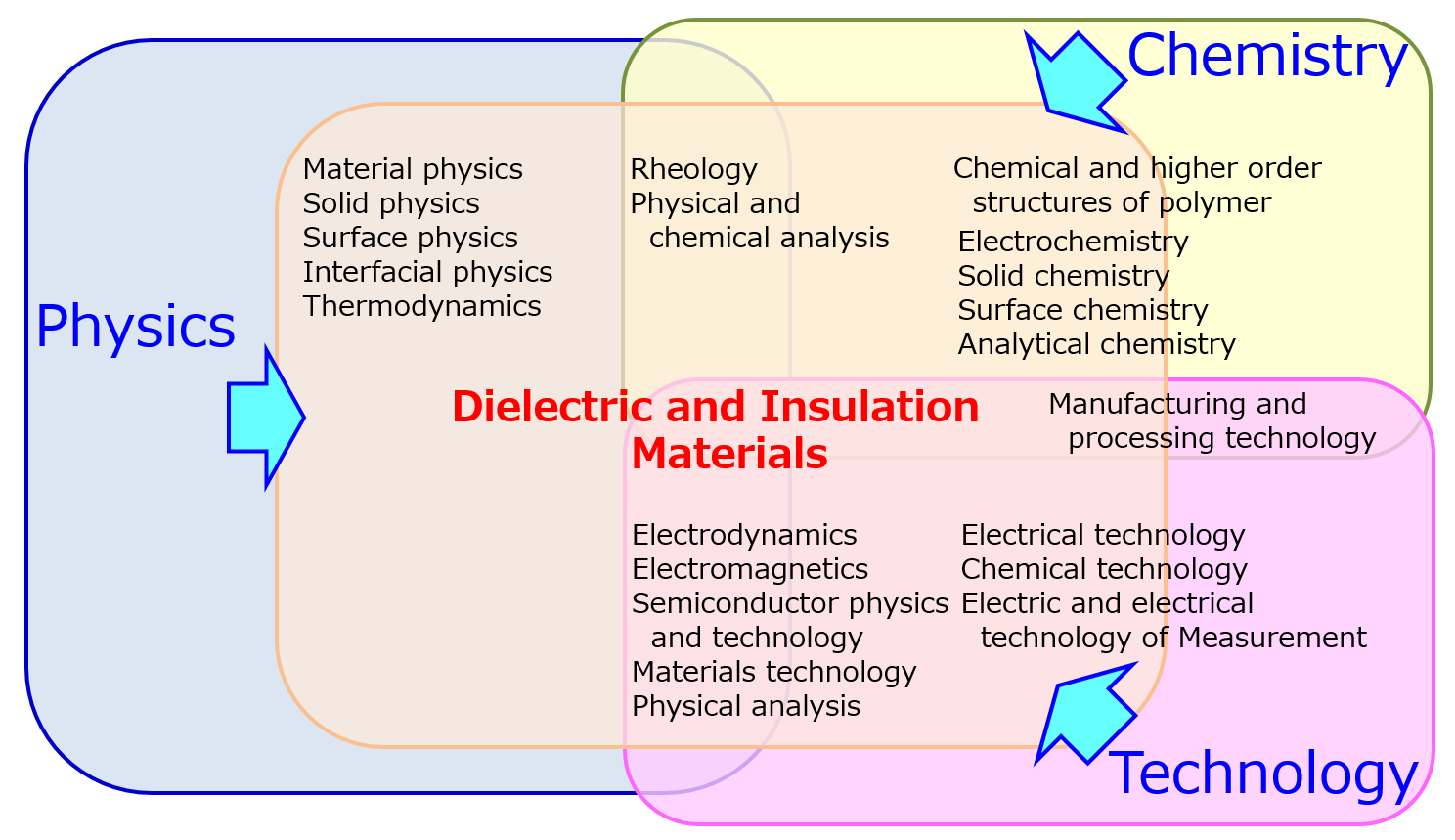
Technological fields surrounding dielectric and insulation materials
Technological fields of insulating materials whose potential expands by analyzing them from various aspects
Previously, insulating materials were mainly analyzed from the viewpoint of electrical engineering. As shown in the figure, they are positioned in interdisciplinary fields of physics, chemistry, and engineering. Thus, insulating materials can be analyzed differently depending on the viewpoint. They are more profound than you may imagine and are scientifically interesting. Interpretation of data obtained by the Q(t) method and measurement techniques using the Q(t) method still require improvements. The more improvements to be made, the more fruitful results to be produced as these technological fields have not been fully established yet. I expect young researchers and engineers to take an interest and take on challenges in these fields.
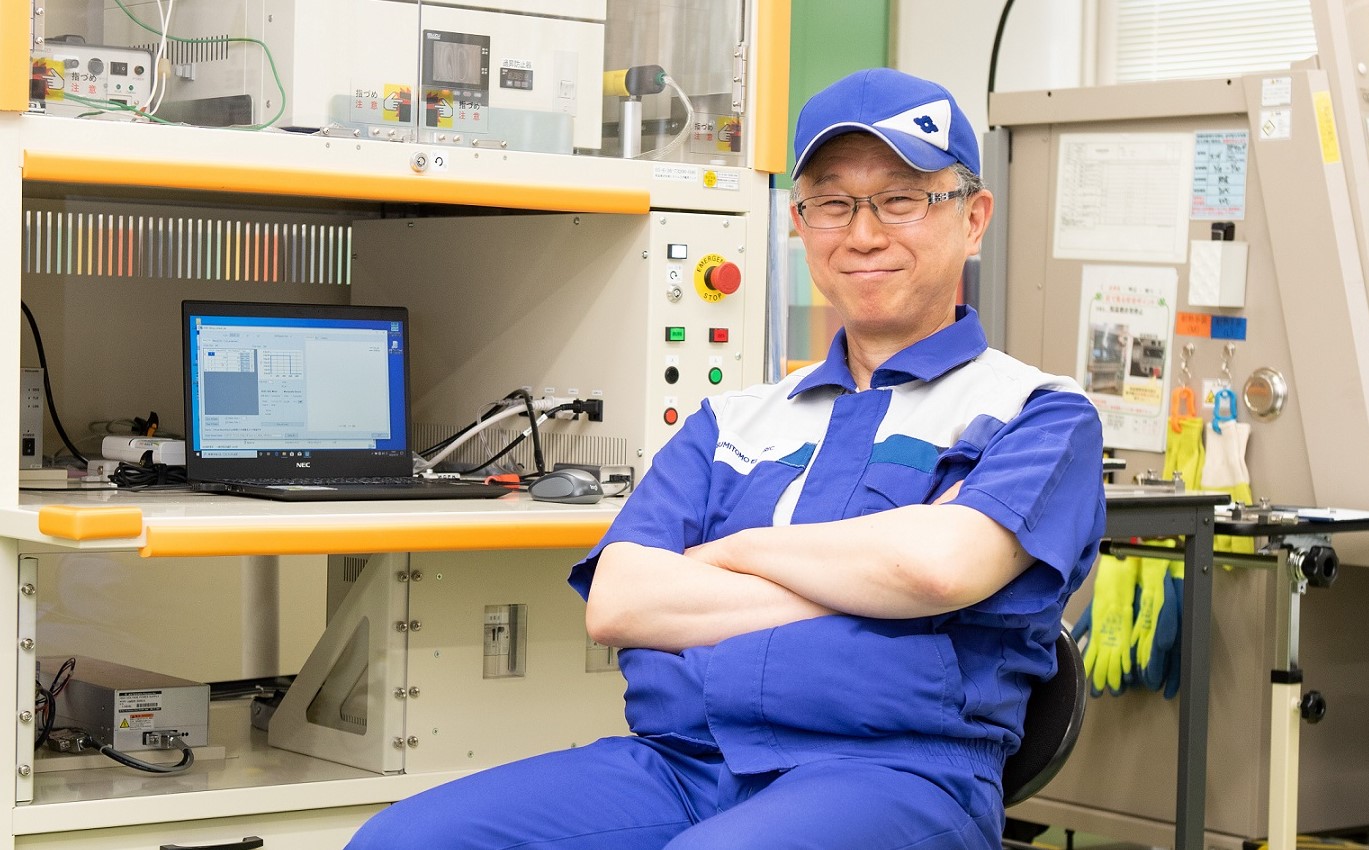
SUMITOMO ELECTRIC TECHNICAL REVIEW
A journal of technical papers explaining the Sumitomo Electric’s technologies. Technical papers are available in PDF format.
Learn more